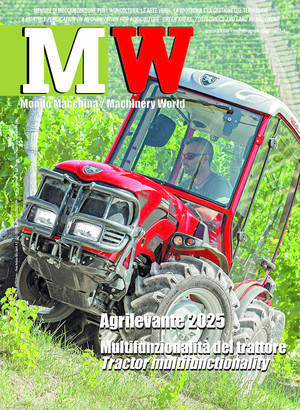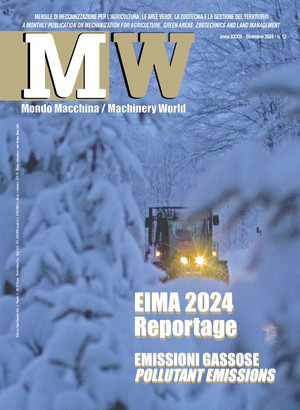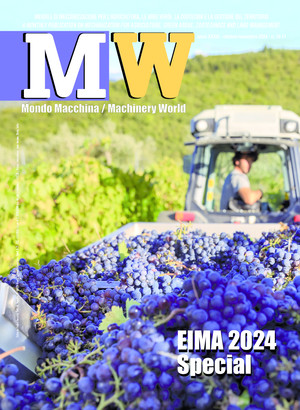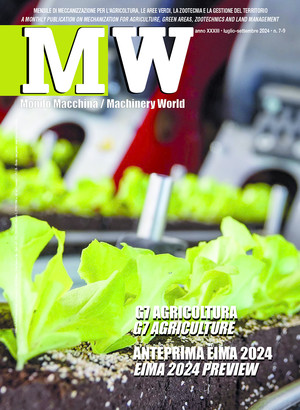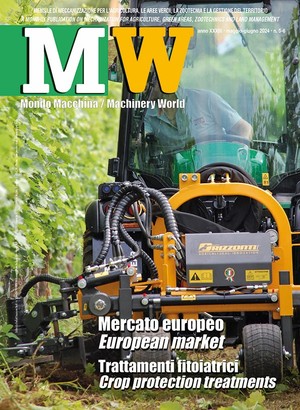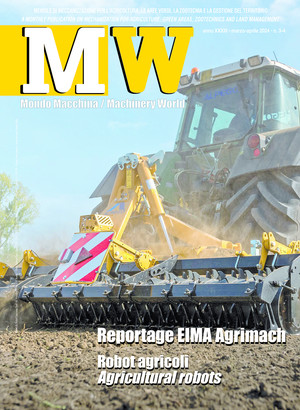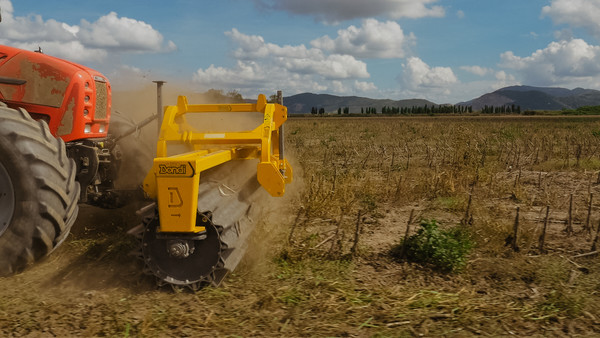
Cover crop mechanization: the role of the roller-crimper
Cover crops are an effective solution for soil protection. The roller crimper is the equipment that breaks down the crops to ensure natural mulching, preserve soil moisture, control weeds and promote fertility
Among the various regenerative agricultural practices, the cultivation of cover crops with the subsequent breaking down of plant material on the soil surface is emerging as one of the most innovative and sustainable. The resulting mulch protects the soil from erosion, prevents the leaching of nutrients (while reducing the risk of nitrate pollution of the water table), limits the impact of high temperatures and reduces evapotranspiration, thus decreasing the water requirements of the current crop.
In addition, the plant material accumulated on the surface acts as a natural barrier against weeds, thus helping to maintain a correct ecological balance. Over time, mulch decomposes; this enriches the soil with organic matter and improves its fertility, thus reducing the need for synthetic fertilizers and, on a more general level, energy inputs, consequently lowering production costs.
Selecting the most suitable mix of species for growing a cover crop is crucial; the speed of germination and growth are important for effective weed control. The selection depends on the agronomic target: the Poaceae intercept nitrogen and prevent erosion, the Leguminosae fix nitrogen and improve soil structure, while the Brassicaceae release compounds with a biocidal effect. Other species, such as phacelia and buckwheat, develop quickly and attract pollinators. By adopting a mixture of species, it is possible to combine several benefits, although this requires careful sowing management.
If planting is done in summer, seeders with passive processing parts are necessary for the superficial preparation of the soil. Even better, seeders can operate on unworked soil to guarantee good contact of the seeds with the residual humidity. Conversely, in autumn sowing of large-seeded species on tilled soil, a centrifugal fertilizer spreader may also be suitable; subsequent rolling favors the adhesion of the soil to the seeds for effective absorption of humidity to activate germination.
The roller-crimper. About two weeks before sowing the main crop, working on warm or dry soil, the cover crop is cut down to the ground with specific equipment, consisting essentially of a cylindrical roller equipped with variously shaped blades or paddles (the so-called ' roller crimper, which is sometimes combined with a disc coulter), to obtain a natural mulch. The next sowing can take place on unworked soil or after a quick pass with a disc harrow, which incorporates organic residues into the first 4-5 cm of soil.
The roller crimper is usually applied to the front of the tractor and has an adjustable frame so that the pressure on the ground and the inclination of the working parts can be adapted to the conditions of the crop and the soil. The main roller, which can be weighted with water or sand if necessary, compresses the vegetation by spreading it out, while the blades fixed to the outer part roughly break and fray the stems, interrupting the lymphatic flow and thus helping the plants to wither. Although shredded, the crop is not chopped up but remains on top of the soil without being incorporated into it, therefore ensuring a stable and uniform cover. For a careful selection of the most suitable type for the operating conditions, there are different versions of roller crimpers, which differ in the kind of rotor, shape of the blades, and other technical specifications.
The shape and section of the blades or paddles that cut down and break up the plant material characterises the effectiveness of the machine: the paddles and shaped plates produce a more aggressive, intense and lasting ‘crimping’ more aggressive, intense and lasting, useful for breaking up thick and dense material and also for a superficial action of breaking up the soil, while the rollers with inverted V-shaped blades have a less incisive action, essentially limiting themselves to breaking down the green material, guaranteeing optimal coverage, effective for weed control. Some models allow you to adjust the weight of the roller by adding water or sand, thus increasing its effectiveness on compacted soil. The diameter of the roller also affects performance: the larger diameter ones are more suitable for hard, compacted soil, while the smaller ones are better if the vegetation is not very developed.
Market overview. The roller toppers (another Italian name for 'roller crimper') in the RT range made by Dondi of Ospedalicchio di Bastia Umbra (Perugia) have working widths between 2 and 4 meters and must be used with tractors between 80 and 180 Hp.
Positioned on a reinforced frame, the roller has straight self-cleaning blades made of boron steel, which extend for its entire width and can be replaced if necessary. These models, like many others made by competitors, can be equipped with a protective casing that wraps around the upper part of the roller to prevent stones or clods of soil caught by the blades from being violently projected outwards. This is, in fact, a plausible eventuality, especially for rather sparse plant cover, where there is also inevitable interference with the top layer of soil.
La Soldo, based in Grassano (MT), produces a roller-crimper suitable for spring work. It is characterized by a roller with a diameter of 610 mm, on which sturdy inverted V-shaped blades are arranged that effectively flatten the crop without disturbing the soil's surface structure. The roller is available in versions with widths varying between 2 and 4 meters, and depending on the working capacity, it must be coupled to tractors with between 80 and 150 Hp.
Officina Meccanica Erea in Candia Lomellina (PV) has developed the Rollo, a line of roller crimpers (this is one of the various Italian definitions of ‘roller crimper’) which, according to the manufacturer, can be adapted to various operating conditions, including the option of increasing ground pressure by filling the cylinder with water or sand. The main models in the line include the Standard version, equipped with C50 steel blades for an incisive action on vegetation; the Evo, suitable for compact soil and resistant vegetation, thanks to its remarkable sturdiness; Extend, for cutting under foliage or along rows, thanks to the lateral translation function up to 500 mm; Reverse, characterized by a vertical frame that can be coupled to the front or rear of the tractor; XL which, as the name suggests, has a considerable working width (up to 6 m) and is therefore suitable for working large areas.
CRG from Mori (Trento) offers a mulching roller (another name for a roller-crimper) equipped with 60 mm high-tempered steel blades arranged in staggered rows on the outer part of the main cylinder. Also in this case, the idle roller can be weighted down with water or sand inside it, for example, up to a maximum of 180 kg on the 1.4 m wide model, within a range that extends up to 2 m. A version with lateral movement is also available.
The roller crimper Katana, marketed in Italy by Agritom of Calvisano (BS), uses helical blades fixed on a central rotor, completed by a front bar that cuts down the vegetation before the blades shred it. Available with a working width of up to 3 meters, it has a maximum mass of approximately 1,800 kg, obtained with the aid of two steel ballast weights installed in the upper part of the machine frame. It requires tractors of up to 120 Hp and can be mounted either at the front or rear of the tractor.


